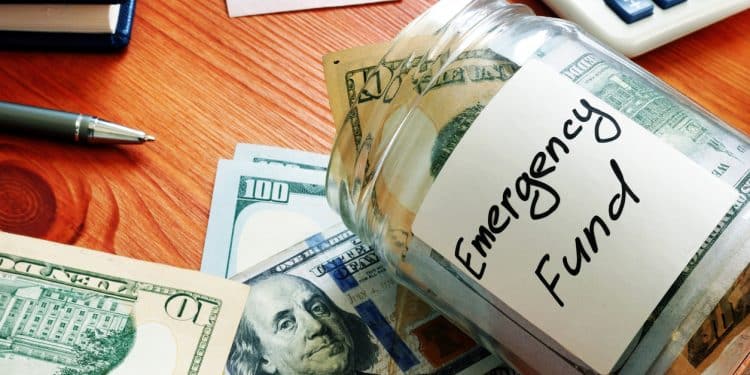What would happen if your car broke down tomorrow? Or if you had an unexpected medical bill? Could you cover it without stressing over your finances? If your answer is no, you’re not alone. Many people live paycheck to paycheck, unprepared for financial surprises. But the good news is that an emergency fund can change that.
An emergency fund is your financial safety net—money set aside to cover unexpected expenses so you don’t have to rely on credit cards or loans. Whether you’re just starting out or rebuilding your savings, this guide will help you create a solid emergency fund step by step. No matter your income, you can build one with the right approach.
If you’re already working on personal budgeting, this is the next step toward securing your financial future. Let’s get started!
What Is an Emergency Fund and Why Is It Important?
An emergency fund is a savings account specifically reserved for unforeseen expenses. Unlike general savings, this money is only used for urgent, necessary costs such as medical emergencies, major home repairs, or unexpected job loss. Having an emergency fund means avoiding high-interest credit card debt or loans when facing financial difficulties.
Key Benefits of an Emergency Fund:
- Protects against financial hardship during unexpected situations.
- Reduces reliance on credit cards and high-interest loans.
- Provides peace of mind by offering a financial buffer.
- Helps maintain long-term financial goals without disruption.
Building an emergency fund is an essential step toward financial independence and stability. By prioritizing savings for unexpected events, you are better prepared to manage financial challenges without stress.
How Much Should You Save?
The ideal emergency fund amount varies based on individual financial circumstances. A common recommendation is to save three to six months’ worth of essential living expenses. This includes costs such as rent or mortgage payments, groceries, utilities, and insurance.
How to Determine Your Savings Goal:
- Minimum Starter Fund: $500 – $1,000 to cover minor emergencies.
- Three-Month Fund: A reasonable target for those with stable income and low expenses.
- Six-Month Fund: Recommended for individuals with dependents, variable income, or high expenses.
While saving several months’ worth of expenses may seem daunting, starting with a small, attainable goal can make the process manageable.
Where to Keep Your Emergency Fund
Your emergency fund should be easily accessible but separate from your everyday spending account. The best options include:
- High-yield savings accounts – These offer interest while keeping your money readily available.
- Money market accounts – Provide slightly higher interest rates while still allowing quick withdrawals.
- Separate bank accounts – Helps prevent the temptation of using emergency savings for non-essential expenses.
Avoid investing your emergency fund in stocks or other high-risk assets. The purpose of this fund is stability, not growth, so it is crucial to keep it in a low-risk, liquid account.

How to Build an Emergency Fund
Step 1: Set a Realistic Savings Goal
Begin by determining a savings target based on your financial situation. If saving several months’ worth of expenses feels overwhelming, start small. Even setting aside $10-$50 per week can build a solid foundation over time.
Step 2: Automate Your Savings
Setting up an automatic transfer to your emergency fund each payday ensures consistent contributions. Treating savings like a non-negotiable expense makes it easier to reach your goal without forgetting or deprioritizing it.
Step 3: Reduce Unnecessary Expenses
Review your monthly spending and identify areas where you can cut back. This might include canceling unused subscriptions, dining out less frequently, or shopping more intentionally. Small savings add up and can accelerate your emergency fund growth.
Step 4: Use Windfalls Wisely
Unexpected income, such as tax refunds, bonuses, or side hustle earnings, can provide an excellent opportunity to boost your savings. Instead of spending it immediately, allocate a portion to your emergency fund.
Step 5: Make Savings a Priority
A strong financial foundation requires discipline and commitment. Prioritize your emergency fund by making saving a regular habit, even when finances feel tight.
When to Use Your Emergency Fund
Your fund is meant for genuine financial emergencies. Understanding when to use it—and when not to—ensures that your savings remain available when truly needed.
Appropriate Uses:
- Medical emergencies or urgent health care costs.
- Essential home repairs (e.g., plumbing or electrical issues).
- Unexpected car repairs necessary for daily transportation.
- Sudden job loss or income reduction.
When NOT to Use It:
- Non-essential purchases such as vacations or shopping.
- Routine expenses that should be covered by regular budgeting.
- Investments or speculative opportunities.
Maintaining clear guidelines for your emergency fund helps preserve it for its intended purpose.
Replenishing Your Emergency Fund
If you need to dip into your savings, focus on rebuilding it as soon as possible. Here’s how:
- Resume automatic transfers to savings.
- Cut discretionary spending temporarily to replenish the fund.
- Use additional income sources such as tax refunds or freelance work to restore savings.
The goal is to always have a financial buffer available, so refilling your fund should be a top priority after using it.
An emergency fund is a critical component of financial security. It provides a financial cushion that allows you to handle unexpected situations without stress or debt. Even if you start small, consistent saving will help you build a solid foundation over time.
If you are already working on smart spending habits, creating an emergency fund is a natural next step in achieving financial stability. Start today by setting aside a small amount and making savings a priority. Your future self will thank you.

Comments 1